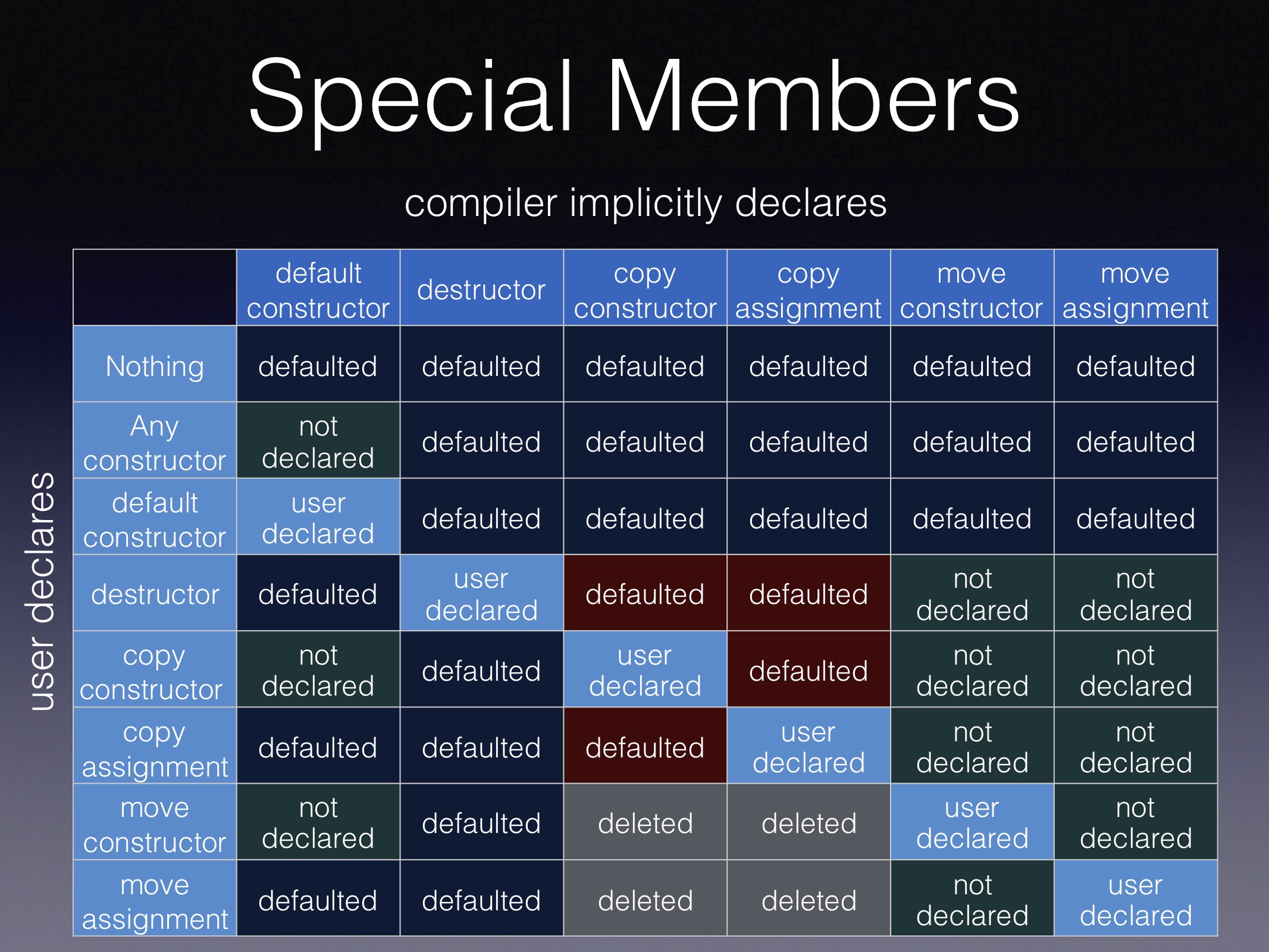c++ rule 5
C++中的”Rule of 5”(五法则)是一个重要的面向对象编程概念,它扩展了早期的”Rule of 3”(三法则)。这个规则指出,如果一个类需要自定义以下五个特殊成员函数中的任何一个,那么通常应该考虑自定义所有五个:
- 析构函数(Destructor)
- 拷贝构造函数(Copy Constructor)
- 拷贝赋值运算符(Copy Assignment Operator)
- 移动构造函数(Move Constructor)
- 移动赋值运算符(Move Assignment Operator)
这个规则的重要性在于:
- 资源管理:确保资源(如动态分配的内存、文件句柄等)被正确管理。
- 一致性:保持对象在各种操作(复制、移动、销毁)中的一致行为。
- 效率:特别是移动语义,可以显著提高性能。
在现代C++中,如果你不需要特殊的资源管理,可以使用 = default 来让编译器生成默认实现,或使用 = delete 来禁用某些函数。
如果你自己定义了析构函数,那么move就不会被编译器自动生成,这在ref1里的Howard Hinnant的演讲中有提到。
1
2
3
4
5
6
7
8
9
10
11
12
13
14
15
16
17
18
19
20
#include <type_traits>
class SomeClass {
public:
SomeClass() = default;
~SomeClass() = default;
void foo();
private:
int m_num{42};
};
static_assert(std::is_default_constructible_v<SomeClass>);
static_assert(std::is_copy_constructible_v<SomeClass>);
static_assert(std::is_copy_assignable_v<SomeClass>);
static_assert(std::is_move_constructible_v<SomeClass>);
static_assert(std::is_move_assignable_v<SomeClass>);
int main() { return 0; }
但是这里又能pass编译,用cppinsights看,其实是生成了拷贝赋值函数。
所以其实有个结论
By providing a destructor while not following the rule of five, our classes lose the ability to support move semantics. Yet, due to backward compatibility, they don’t fail to compile, they silently fall back to copy semantics
REF
This post is licensed under CC BY 4.0 by the author.
